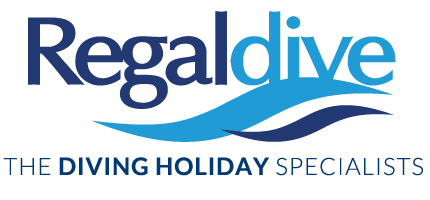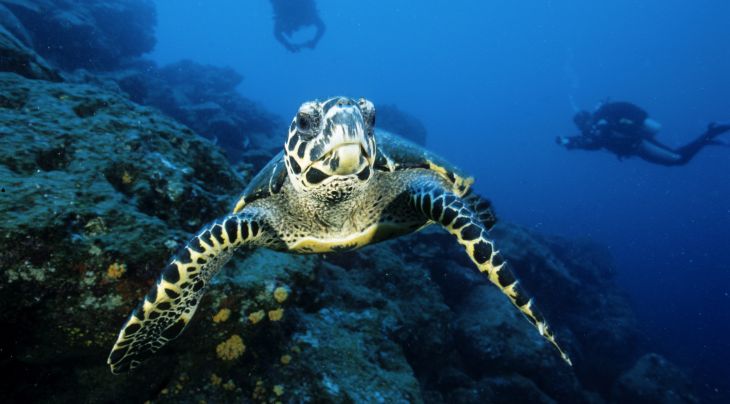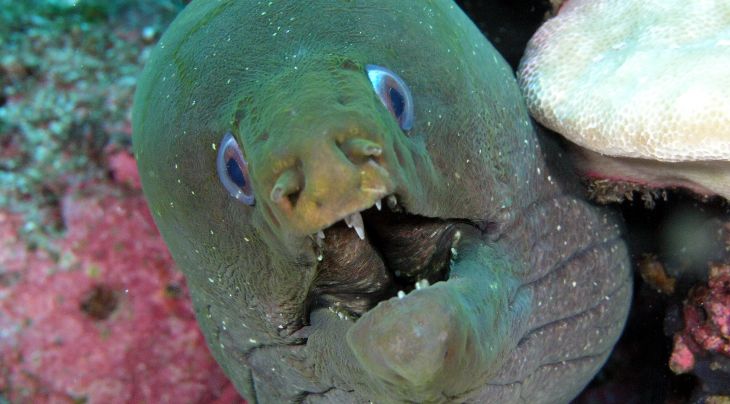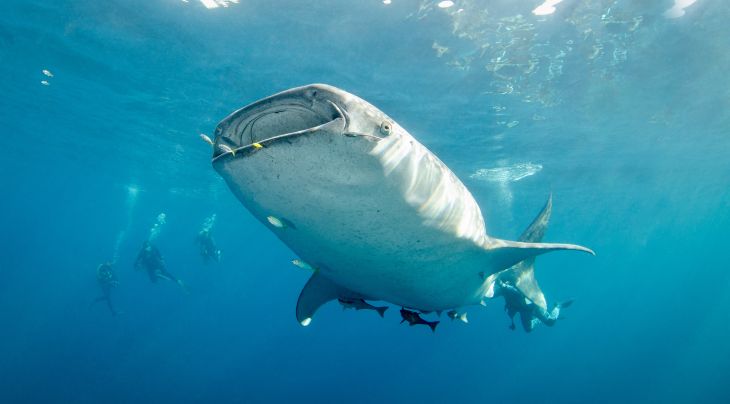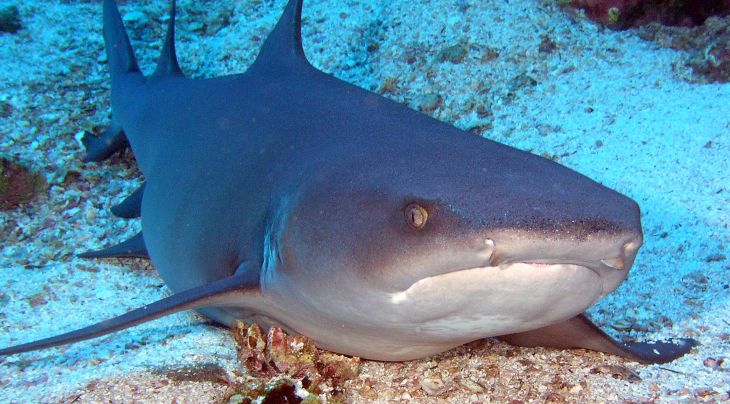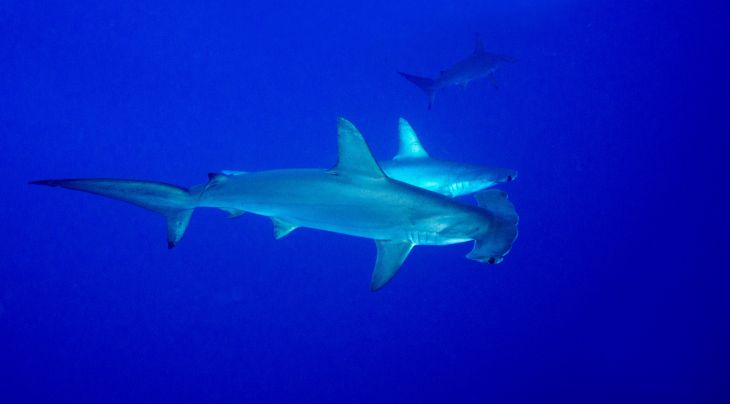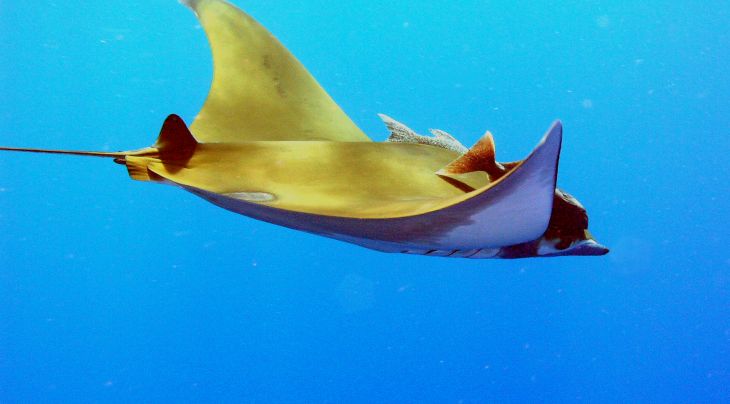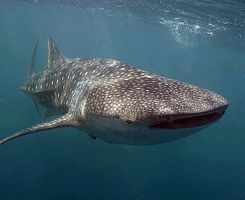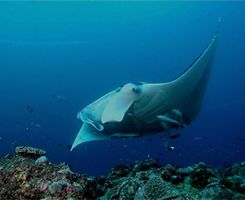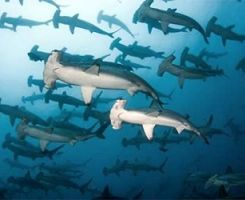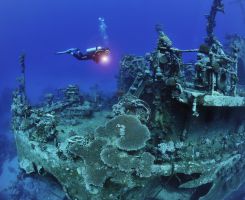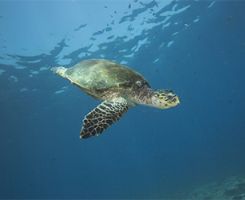- More More
- Blog
- Inspire me
- Groups
- Offers More
- Dive Courses More
- Liveaboards
More

Liveaboard Trips
On-board accommodation offering the opportunity to live right over the dive sites and to experience secluded dives...
Diving regions...
- LATEST AVAILABILITY BY REGION
- Red Sea availability
- Maldives availability
- Indonesian availability
- Socorro Mexico availability
- Galapagos availability
- ALL LIVEABOARD DIVING REGIONS
- Bahamas
- Bikini Atoll
- Caribbean
- Cocos Island
- Destinations
MoreDIVING REGIONS...
Our Top destinations....Why not try....
Find a trip
- Resort
- Liveaboard
Cocos Island Liveaboards
Cocos Island Facts...
Area: 23.85 km²
Population: uninhabited
Language: Spanish
Time: GMT -6 Hours
ELECTRICITY: 110V
PLUGS: American 2 pin
The uninhabited Cocos Island lies in the eastern Pacific, around 340 miles south west of Costa Rica. A rugged, yet green and verdant island that is a National Park and was designated a World Heritage site by UNESCO in 1997. It’s only a small dot of land in the vast Pacific, measuring roughly five miles by two miles, but a beacon for larger ocean creatures and therefore for divers.
The island itself was formed by volcanic activity millions of years ago and consists of four mountain peaks, the highest of which is Cerro Iglesias, at 690m above sea level. This island is covered in thick forest and only the National Park Rangers are allowed to reside there. The island is surrounded by deep waters populated by Whale Sharks, Schooling Hammerhead Sharks, White-tip Sharks, Tuna, Manta Rays & three species of Turtle. Dolphins are often seen and the odd whale if you are lucky.
DIVING
Due to the amount and diversity of marine life in its waters Cocos Island was named one of the best 10 scuba diving spots in the world by PADI and should be on any serious divers ‘To Do’ list.
The only way to visit the island for diving is by liveaboards, which operate year round. The driest time of the year is January to March and the seas are generally calmer from December to May, with better visibility. The rainier time from June to November has a greater amount of plankton in the water, attracting more pelagic species and as expected the visibility is not as good.
There are only two bays with safe anchorages and sandy beaches: Chatham is located on the northeast side and Wafer Bay is on the northwest. Nearby there are a series of smaller basaltic rocks and islets. The water temperature varies between 22 - 28°C with cooler thermoclines, and on land the island is humid and tropical with an average annual temperature of 26. 6°C.
SEASONS
Cocos diving is divided into two major seasons: the dry season (November/December to April/May) and the rainy season (May/June to November). The following will give you a general idea of what the seasons are like, but of course it is impossible to predict what you will see on any given trip, or indeed any given dive. That is part of what makes Cocos Island so special.
The dry season is normally blessed with calm, sunny weather, with water temperatures in the 26-28°C range, and with visibility ranging from 18-30 metres, and active reproduction behaviour observed. Large schools of fish are frequently seen at various distances from the rocks. Hammerhead sharks, individuals and in schools, are commonly spotted in the open water. New born marble rays and whitetip sharks are abundant during this time. During this period divers can usually dive at most dive sites around the island.
During the rainy season, the prevailing south wind limits the number of days for comfortable diving at the east and southwest sides of the island. The calm water of the northeast lee side of the island provides a safe haven for boats and the necessary protection for the marine life.
Water temperature is around 24-26°C, and the visibility averages 12-24 metres. During the months of July through October, hammerhead activity is at its peak; hundreds can usually be seen in very shallow waters, and at very close proximity to the rocks. Cleaning-stations are extremely active for long periods of time. Humpback whales, mothers and calves, usually visit the island every year between July and September.
Schooling whitetips in great numbers can be seen year-round, and there is a chance of seeing dolphins, marble rays, mantas, sailfish, whale sharks and other marine mammals throughout the year as well. The tiger shark is a year round resident at Cocos.
Considering that it is such a nutrient-rich environment, and since it is the only island for many miles around, Cocos acts as a magnet for the large pelagics that are always to be found there. Divers are likely to be impressed by the marine life in this area, no matter what time of year they visit.
It is important to remember that Cocos weather is classically unpredictable, and so it is hard to predict exactly what mixture of marine life you will get on any one trip at any time of year.
Diving experience
Whilst diving at Cocos Island is extraordinary & beautiful, the Cocos Island area is very remote and suited to experienced divers. To get the best possible experience, we strongly recommend that you are at least Advanced Certified with a Deep Diver speciality. Divers should have around 40–50 hours of experience to really enjoy this bucket list destination.
Currents and visibility can be entirely different in just a few hours. Hence, we recommend some previous open water experience & some experience diving with currents. Diving conditions can vary according to the season, with the dry season (December to May) having calmer diving conditions. Cocos is no more difficult than any other Pacific, Indian or Red Sea diving location.
Being Nitrox certified is strongly recommended.
For a map of Cocos Island please click here
LIVEABOARD AND ISLAND COMBINATIONS TAILORMADE
We offer tailormade holidays to Cocos Island. This means that we can organise your holiday based on your requirements. Many guests enjoy a twin centre combination of a Cocos Island liveaboard and an island based holiday in Costa Rica exploring the amazing volcanoes and wonderful wildlife.
Regaldive operate a number of liveaboard itineraries, so you can choose your ideal Cocos Island diving experience. Cocos liveaboards usually run 10 night itineraries, but some 11-14 night trips operate.
Please note that liveaboard itineraries can change without notice. The itinerary will depend on several factors including, but not limited to, weather, diving ability of guests and the number of other boats already present at the various dive sites. All dive sites visited are subject to weather conditions and are at the discretion of your dive guides and vessel captain.
Please be aware that the Cocos Island National Park Department has temporarily suspended night dives at the island for safety reasons.
Okeanos Aggressor II
View a sample Cano Island Adventure Liveaboard itinerary
Sea Hunter
FLIGHT INFORMATION
Cocos Island is accessed through Cost Rica and flights into the capital, San Jose, are recommended. British Airways fly direct from London Gatwick to San Jose, twice weekly in the Summer and three times per week in the Winter. Flight time around 11 hours. Overnight stays are required in San Jose.
PASSPORTS & VISAS
Visas: British nationals do not need a visa to enter Costa Rica. You can stay as a visitor for up to 3 months.
Always check for last minute changes in entry requirements at the Foreign & Commonwealth website www.fco.gov.uk Nationalities other than British citizens should check with their own consular office.
Please always check your own entry requirements, regardless of your nationality.
Passport Validity: Your passport should have at least one day’s validity from the date you are leaving Costa Rica. If you hold a passport other than a British Citizen passport, different regulations may apply.
Evidence of onward travel: Entry to Costa Rica may be refused if you are unable to produce evidence of return or onward travel (for example a return air ticket).
Airport tax
There’s a departure tax of $29 when leaving the country by air. Some airlines have started to include this in ticket prices.
VACCINATIONS & HEALTH INFORMATION
If travelling from the UK, there are no compulsory vaccinations for travel to Costa Rica, but we always recommend protection against typhoid, tetanus, hepatitis A and polio.
Malaria & Dengue. There is a very low risk of Malaria and Dengue is known to exist in Costa Rica and avoidance of Mosquito bites is recommended.
Vaccination requirements are subject to change and should be confirmed before departure. For the most up to date advice please consult your travel clinic or GP. Further information regarding vaccinations for travel to this country can be found at www.fitfortravel.nhs.uk and from your local healthcare provider.
Okeanos Aggressor I
Destination Really Does Live up to Expectations
"What can I say; an amazing trip thanks! The sheer number of sharks, especially hammer heads, was incredible. You sort of expect it because that’s what the Cocos Islands are about, but when you are there and literally see 100’s in schools coming past, it’s just out of this world.
A favourite memory from the holiday was seeing whale sharks on the last dive, and a wall of 100s of hammerheads on another. The destination really does live up to expectations. The Liveaboard Staff and Crew were great - very helpful and friendly. The transfers and ground arrangements were good. Driver was there on arrival, and the Aggressor transfer worked well.
The dive sites and itinerary were a good mix. Some of the dive sites do require a 15 min rib ride to get to, and on the exposed side of the island can be a tad uncomfortable after a while. Note that BCD and tanks remain on the rib, and therefore kit is donned on the rib when you get to the dive site. It’s definitely a location for experienced divers though, as the sea conditions can be quite challenging, However, I think we were lucky with the currents as they weren’t as bad as I was expecting.
Okeanos I is functional, and not as luxurious as other boats in the fleet. The lounge area was definitely small for a full boat. Rooms are pretty basic and quite small, although you really don’t spend much time there. The food on the boat was excellent, and the staff more than happy to accommodate people's wishes. Wine and beers were good quality with generous amounts available. Staff in general were all friendly, and the captain and Warren who were the guides were both fun but professional.
The Holiday Inn was nice, if only a bit quiet. The area around is quite affluent, and so has good restaurants though. It it quite a way out of San Jose, and costs about USD20 for a taxi in.
"
Gareth Lewis - UK
Okeanos Aggressor I
Worth Every Penny - Sharks Everywhere!
"The trip was everything that we expected and was worth every penny. Hammerheads, Tiger, Galapagos and Silky Sharks everywhere!
The transfers and ground arrangements were very good, found the taxi driver with my name on a board, the hotel paid my fare in cash to him. Transfers from Hotel to boat and from boat to airport were flawless. The hotel was standard airport-transfer kind of place with plenty of restaurants nearby. Liveaboard accommodation was a tiny bit larger than I expected (in terms of baggage accommodation).
The food was not as good as Red Sea or Thailand liveaboards I have been on, but clearly aimed at US divers. Food quality was good and plenty to eat though.
The captain allowed us to make a choice with dive sites later in the week based on dive sites already done, which was gratefully received.
We received excellent service from all staff on board.
A favourite memory from the holiday was the people I met onboard and the tiger sharks were also a hit!"
David Murdoch - UK
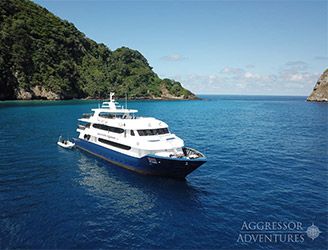
Cocos Island Aggressor
The Cocos Island Aggressor is a modern liveaboard accommodating 22 guests in private staterooms operating diving adventures t...
VIEW DETAILS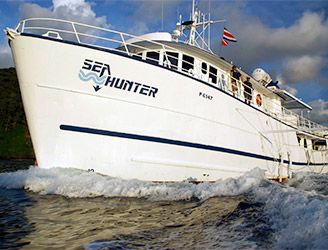
Sea Hunter
The Sea Hunter is 35m of liveaboard comfort and convenience. Specialties are excellence in service, food and non-st...
VIEW DETAILS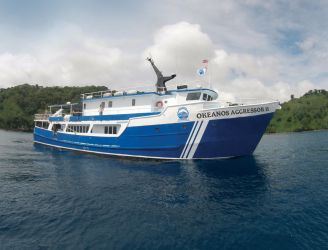
Okeanos Aggressor II
Okeanos Aggressor II (formerly Wind Dancer) accommodates 22 guests in 8 double/twin stateroom cabins, 2 luxurious suites and ...
VIEW DETAILS